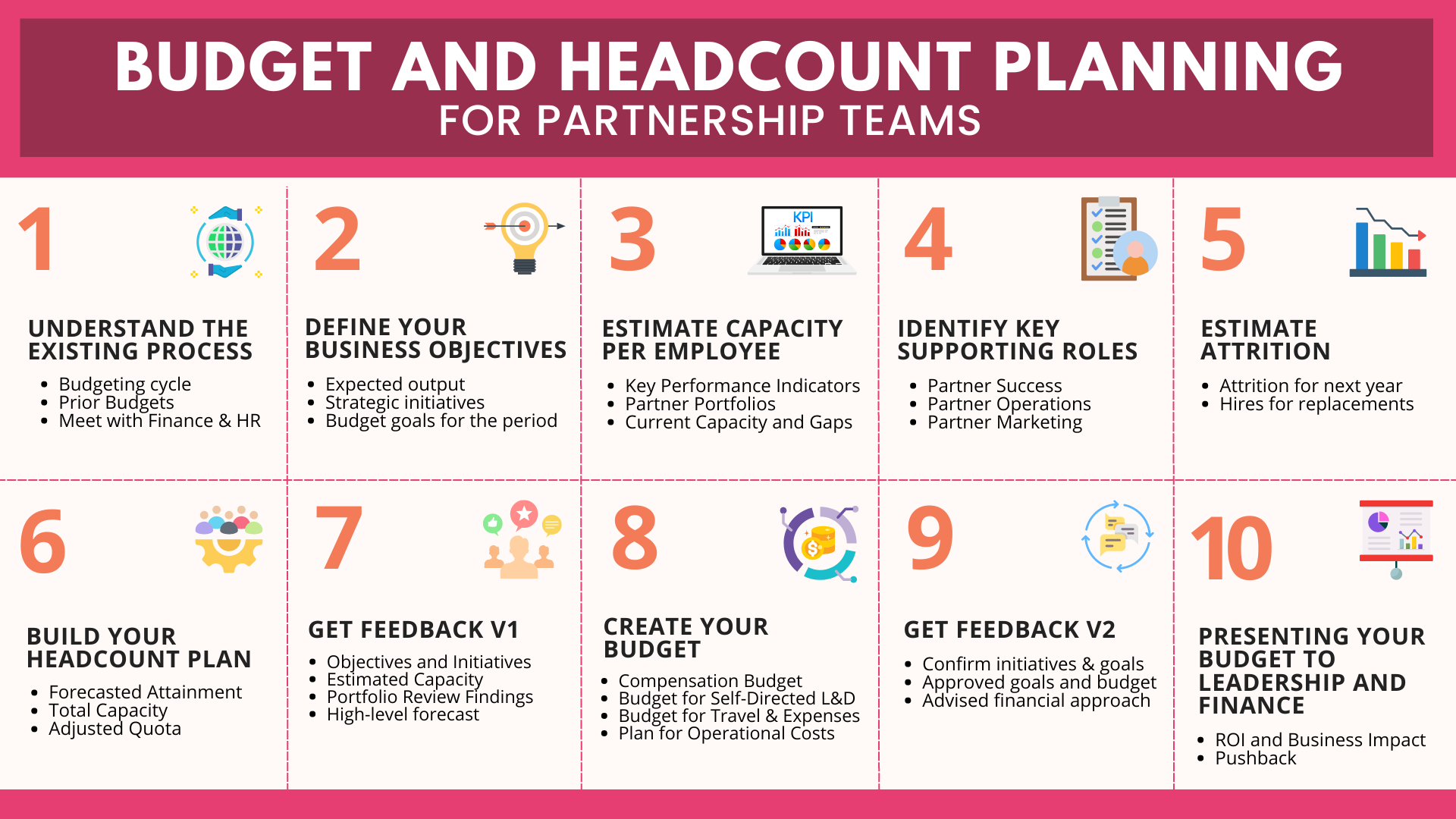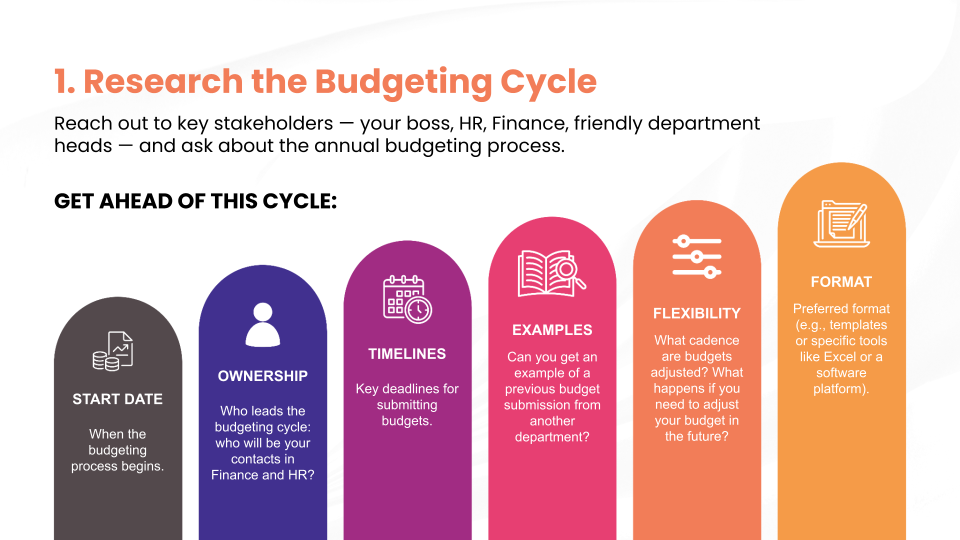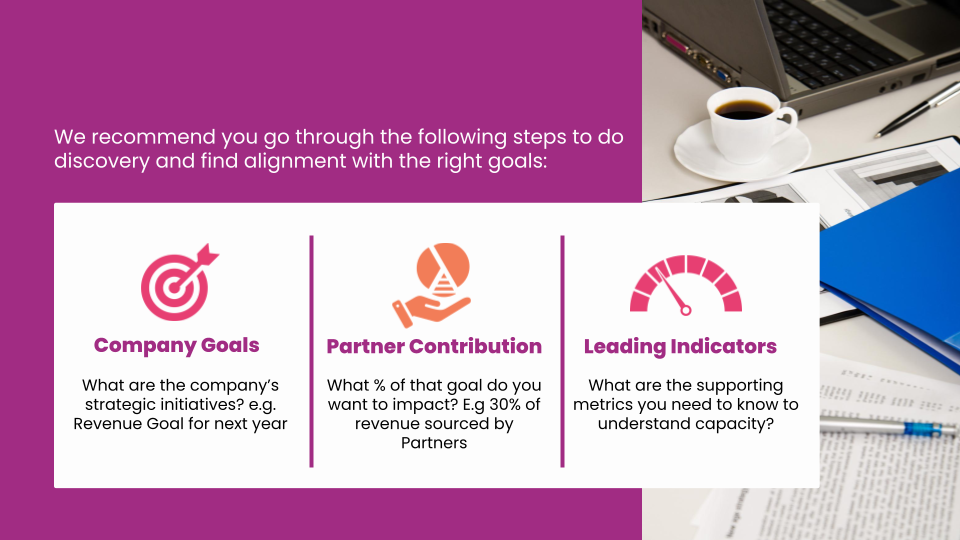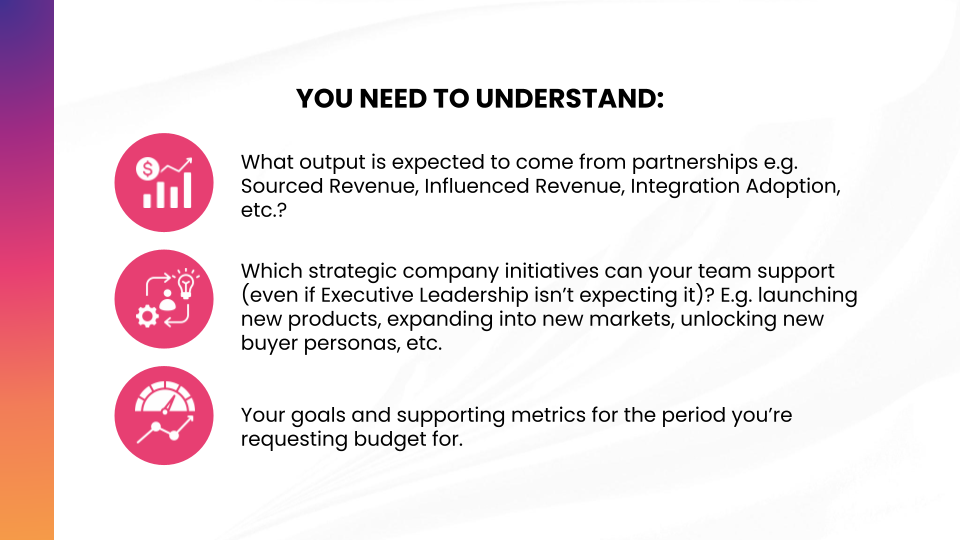Planning your team’s budget is no small task, especially when it comes to securing resources for strategic partnerships. In a public webinar I hosted, we explored insights on how to build a rock-solid budget plan that positions your partnerships for success.

My advice? Don’t wait for the budgeting cycle to sneak up on you – start laying the groundwork now. Access the full budget and headcount planning template here.
Here are some best-in-class strategies to prove the value of partnerships and take control of your financial planning early.
1. Master the Budget Cycle
Too often, teams wait until it’s too late to make their case, only to find out that the window for securing funds has already closed. Budgeting for partnerships isn’t just about asking for money, after all. It’s also knowing when, how, and from whom to ask.

“Once you understand the budget process, you can ask a trusted advisor what the ‘unwritten’ rules are.” – Craig Stermer
The first step is simple but crucial: start early.
Schedule meetings with finance, HR, and department heads to get a clear picture of the budget cycle, including:
- Timelines
- Constraints
- Opportunities
By understanding how budget decisions are made, you position your team to make a more compelling case.
“The most successful model was to differentiate what we needed centrally versus what was budgeted with product and field teams.” – Michael Werner
Taking these steps early gives your team more leverage and signals to decision-makers that strategic partnerships are a priority. In the end, it’s about understanding the game and playing it well!
2. Align KPIs to Company Goals
Your budget is only as safe as the KPIs you align with your company’s goals. If your key performance indicators (KPIs) aren’t aligned with what leadership values, you risk losing funding – even if your team is performing well.
“It is a fine line with setting KPIs. If you are hitting all your KPI’s as a partner leader/team and your direct sales teams are missing their numbers—you have to evaluate if you are aligned properly.” – David Saxon
The takeaway here is to reassess your KPIs regularly.
Are they aligned with your company’s revenue goals, product roadmaps, or other high-level initiatives? If not, it’s time to pivot. Partnerships that contribute directly to these larger goals will stand a better chance of securing the resources they need.

“Budget is crucial, but tends to matter less than KPIs/measurements and how the team performs to those.” John Lingos-Webb
Next, communicate these KPIs clearly to stakeholders.
Show how your partnerships are contributing not just to revenue, but to the overall health and growth of the business. Tying your KPIs directly to company objectives makes it much harder for leadership to cut your budget during the planning cycles.
This is about speaking the language of the leadership team. If your KPIs show that strategic partnerships are integral to the company’s success, you will have the leverage you need to defend your budget during tough conversations.
3. Collaborate Across Teams
Strategic partnerships don’t operate in a vacuum.
One of the key themes of annual planning is to work across departments – whether it’s sales, marketing, or product teams – to ensure your partnerships are fully supported. Without this alignment, even the best partnership strategies can struggle to gain traction.
“Partner marketing should sit in the marketing org with a direct tie to the partner team. Being embedded in the marketing org provides access to the martech stack and brings partners into general marketing materials.” – Amanda Maxwell
First, break down the silos.
Schedule regular check-ins with cross-functional teams to ensure they understand the value your partnerships bring, such as:
- Increase revenue
- Enhance product offerings
- Drive brand awareness
- Contribute to long-term growth
“Make sure you are working collaboratively across functions in getting strategy and KPIs aligned. More skin in the game equals more commitment to the ecosystem.” – Michael Werner
Working closely with other departments creates shared ownership of your partnership’s success, making it easier to secure buy-in when it comes to budget planning.
Don’t stop at just meetings – take tangible steps to align your efforts. Whether it’s involving marketing teams in go-to-market strategies or collaborating with product teams to drive innovation, the more embedded your partnerships are within the company, the harder it will be to ignore their impact when budget discussions come around.
4. Define Your Team’s Value Proposition
While revenue is often the first metric people think of, the value of strategic partnerships goes beyond the dollars they bring in. If you want to protect your budget, you must ensure leadership understands the full scope of what your partnerships deliver.
This includes benefits like:
- Brand visibility
- Product innovation
- Market expansion
“I was given double my budget once I started measuring my partners’ value beyond pure revenue. Some of them brought us into trade shows and marketing campaigns that were extremely valuable to our company.” – Craig Stermer
Start by building a strong narrative around the broader contributions your partnerships provide. For example, are they opening doors to new markets, increasing customer engagement, or contributing to long-term strategic goals? If so, these elements must be highlighted when making your case for funding.

Next, quantify these non-revenue contributions whenever possible. Showing leadership a comprehensive picture of your partnerships’ value will make it much harder for them to cut your budget.
Here are some examples:
- Co-marketing efforts that increase brand exposure
- Technical integrations that enhance product capabilities
“The value of partnerships is very clear when the pipeline is heavily driven by partners.” – Lalita Tadkonda
Finally, don’t forget to communicate these broader contributions regularly, not just during budget season. Make it a point to keep leadership in the loop throughout the year, so when budget discussions arise, they already recognize the multifaceted value your strategic partnerships provide.
Conclusion
Strategic partnership planning can make or break your success, so use these tips to help you nail your budget and align your team’s goals. Want more? Become a member to unlock the recorded webinar version and exclusive annual planning resources to sharpen your strategy.
Join The 1850+ Leaders Transforming Partnerships
As a member of Partnership Leaders, you will:
- Build and learn with the top partner people at the best companies around the world.
- Increase your impact and accelerate your career with proven resources, tools, and best practices.
- Grow a network of peers, partners, and advisors with common objectives.



